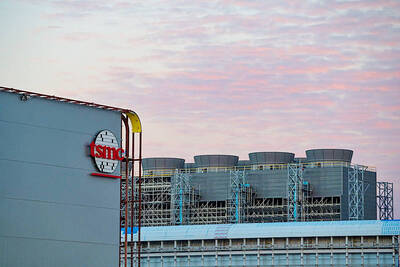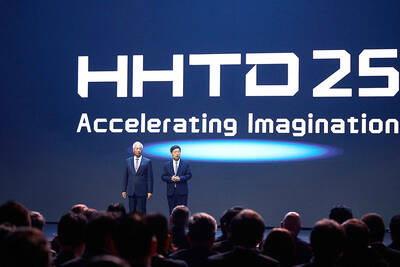The world's largest energy market, the New York Mercantile Exchange (NYMEX), is exploring a sale to NYSE Euronext, Deutsche Boerse AG or Chicago Mercantile Exchange Holdings Inc (CME), two people involved in the discussions said.
NYMEX Holdings Inc may be valued at US$155 a share or US$14.3 billion, 11 percent more than Thursday's closing price, said one of the people, who asked not to be identified because the talks are confidential. Top NYMEX executives have met with their counterparts at the three suitors, the people said. NYMEX's board has been informed of the discussions.
NYMEX shares climbed to a record. The stock, dismissed earlier this year by analysts as overvalued, has surged on speculation about a sale. Exchanges worldwide are combining so they can offer customers more products in one place. The growth of electronic trading has broken down barriers among national markets. NYMEX does not have its own electronic futures trading and pays to use the Chicago Mercantile Exchange's system.
"What this does is speak to how size is extremely important to being competitive," said Mark Williams, a finance professor at Boston University. "The derivatives market in general has really exploded in part because trade is becoming more global."
In April, NYSE Group Inc bought Euronext NV for US$14.6 billion and Frankfurt-based Deutsche Boerse agreed to buy New York-based International Securities Exchange for US$2.8 billion.
Deutsche Boerse, NYSE Euronext and NYMEX declined to comment. Chicago Mercantile Exchange said in a statement yesterday that it "is not currently in any discussion with NYMEX regarding a merger or acquisition" and is focused on completing its purchase of the Chicago Board of Trade.
The Board of Trade has agreed to sell to its crosstown rival for US$ 10.2 billion and has spurned an unsolicited US$11.1 billion offer from Intercontinental Exchange Inc. In January, Atlanta-based Intercontinental, the biggest competitor to NYMEX in the trading of benchmark oil and fuel contracts, completed a US$1.8 billion purchase of the New York Board of Trade, which trades sugar and cocoa futures.
Bankers have not yet been hired to advise NYMEX on the possible sale, the people said. The discussions are likely to accelerate after July 9, when shareholders of the Chicago Board of Trade vote on a proposed acquisition by the Chicago Mercantile Exchange, they said.
NYMEX shares gained 13 percent this week. They rose US$2.32 to close at US$142.12 on the New York Stock Exchange.
Deutsche Boerse shares rose 3.31 euros to 88.44 euros in Frankfurt. NYSE Euronext fell US$0.80 to US$80 in New York.
The June 11 decision by US Justice Department antitrust regulators to allow the proposed merger of the Chicago Merc and Chicago Board of Trade helped boost NYMEX shares, Williams said.
If the government doesn't object to combining the Chicago exchanges, which together control more than 95 percent of exchange-traded US futures based on interest rates and stock indexes, it probably won't find fault with a sale of the NYMEX, Williams said.

Shiina Ito has had fewer Chinese customers at her Tokyo jewelry shop since Beijing issued a travel warning in the wake of a diplomatic spat, but she said she was not concerned. A souring of Tokyo-Beijing relations this month, following remarks by Japanese Prime Minister Sanae Takaichi about Taiwan, has fueled concerns about the impact on the ritzy boutiques, noodle joints and hotels where holidaymakers spend their cash. However, businesses in Tokyo largely shrugged off any anxiety. “Since there are fewer Chinese customers, it’s become a bit easier for Japanese shoppers to visit, so our sales haven’t really dropped,” Ito

The number of Taiwanese working in the US rose to a record high of 137,000 last year, driven largely by Taiwan Semiconductor Manufacturing Co’s (TSMC, 台積電) rapid overseas expansion, according to government data released yesterday. A total of 666,000 Taiwanese nationals were employed abroad last year, an increase of 45,000 from 2023 and the highest level since the COVID-19 pandemic, data from the Directorate-General of Budget, Accounting and Statistics (DGBAS) showed. Overseas employment had steadily increased between 2009 and 2019, peaking at 739,000, before plunging to 319,000 in 2021 amid US-China trade tensions, global supply chain shifts, reshoring by Taiwanese companies and

Taiwan Semiconductor Manufacturing Co (TSMC) Chairman C.C. Wei (魏哲家) and the company’s former chairman, Mark Liu (劉德音), both received the Robert N. Noyce Award -- the semiconductor industry’s highest honor -- in San Jose, California, on Thursday (local time). Speaking at the award event, Liu, who retired last year, expressed gratitude to his wife, his dissertation advisor at the University of California, Berkeley, his supervisors at AT&T Bell Laboratories -- where he worked on optical fiber communication systems before joining TSMC, TSMC partners, and industry colleagues. Liu said that working alongside TSMC

TECHNOLOGY DAY: The Taiwanese firm is also setting up a joint venture with Alphabet Inc on robots and plans to establish a firm in Japan to produce Model A EVs Manufacturing giant Hon Hai Precision Industry Co (鴻海精密) yesterday announced a collaboration with ChatGPT developer OpenAI to build next-generation artificial intelligence (AI) infrastructure and strengthen its local supply chain in the US to accelerate the deployment of advanced AI systems. Building such an infrastructure in the US is crucial for strengthening local supply chains and supporting the US in maintaining its leading position in the AI domain, Hon Hai said in a statement. Through the collaboration, OpenAI would share its insights into emerging hardware needs in the AI industry with Hon Hai to support the company’s design and development work, as well